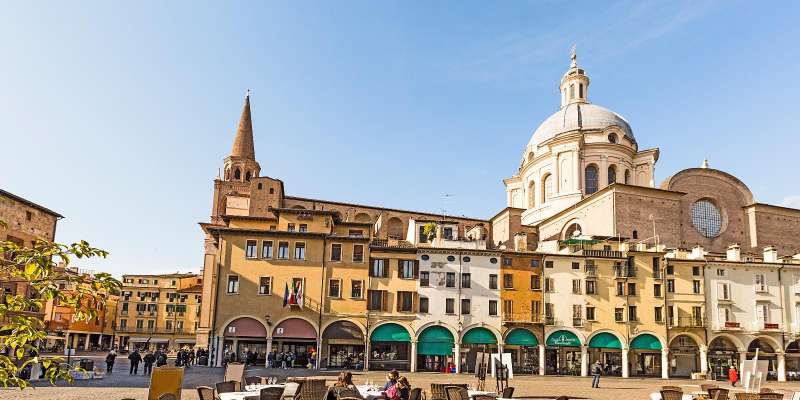- Home
- Useful Tips
- Mantua's best shopping streets...
Finding authentic local products in Mantua can be surprisingly challenging for visitors. While the historic center brims with shops, many cater to tourists with inflated prices and mass-produced souvenirs. A 2022 visitor survey revealed 68% of travelers left Italy without buying genuine local crafts, later regretting their purchases. The maze of narrow streets makes it easy to miss hidden workshops where artisans have operated for generations. You might wander past leather-bound books made with Renaissance techniques or bypass family-run delicatessens stocking pumpkin-filled tortelli pasta – Mantua's culinary signature. This disconnect between what tourists find and what locals cherish creates frustration for travelers seeking meaningful connections through shopping. The solution lies in navigating Mantua's commercial landscape with neighborhood-specific knowledge.


Why most visitors miss Mantua's authentic shopping experiences
The concentration of souvenir shops around Piazza Sordello and Piazza delle Erbe creates a gravitational pull for time-pressed tourists. These central locations stock predictable merchandise – branded t-shirts, generic ceramics, and machine-printed posters of Palazzo Te. What they lack are the distinctively Mantuan products that reflect the city's ducal history and agricultural traditions. Local artisans often operate on side streets without flashy signage, their workshops identifiable only by the whir of sewing machines or the scent of tanned leather. Another barrier is timing; many traditional ateliers still observe the Italian pausa, closing for afternoon breaks when cruise passengers descend upon the city. Without understanding these patterns, you risk returning home with items that could have been bought anywhere in Italy rather than treasures carrying Mantua's unique stamp.
Via Pescheria – where foodies find Mantua's culinary soul
The arched porticoes of Via Pescheria shelter food shops preserving Mantua's gastronomic heritage. Start at Salumeria Pasini, where fourth-generation owners age sbrisolona crumbly cakes in wooden crates – ask to sample their mostarda made with local quinces. Across the street, Antica Drogheria Pavesi displays saffron threads from San Giovanni del Dosso in apothecary jars, alongside bags of pearl-like riso vialone nano used for risotto alla pilota. For the ultimate food souvenir, visit Enoteca Sant'Anna for small-batch lambrusco mantovano from vineyards surrounding the city. These family businesses welcome questions about product origins, transforming shopping into cultural exchange. Arrive before noon to watch cheesemakers deliver fresh grana padano wheels to Caseificio Sociale Mantovano, their straw-colored rinds stamped with production dates.
Via Calvi's hidden workshops – craftsmanship behind unassuming doors
Parallel to main thoroughfares, Via Calvi hosts artisans practicing trades dating to the Gonzaga dynasty. Bottega del Restauro blends pigments using 16th-century recipes for restoring frescoes – they sell miniature paint sets perfect for art lovers. Nearby, Legatoria Arianna hand-binds journals with marbled paper designs seen in Mantua's ducal archives. The true gem is Sartoria Novecento, where octogenarian tailors still cut suits from Mantua-made woolens. While some items exceed typical souvenir budgets, even observing these masters at work provides cultural insight. For accessible crafts, Ceramiche Artigianali sells espresso cups glazed in the same verdigris green as Palazzo Ducale's roofs. These shops rarely advertise; listen for the click-clack of looms upstairs at Tessitura Ghidini, producing fabrics with patterns from Renaissance tapestries.
When to shop like a local – seasonal rhythms and discount periods
Mantuans time purchases with agricultural cycles and religious festivals for peak quality and value. September brings fresh pumpkin shipments to alimentari shops, ideal for buying tortelli filling ingredients. November sees woodworkers unveil intricate nativity scenes at botteghe near Sant'Andrea Basilica. For discounts, visit during January's saldi (sales) or the quieter weeks between Carnival and Easter. Many workshops offer demonstrations during Festa della Sensa in May, when artisans open normally private courtyards. Avoid Monday mornings when some smaller businesses remain closed, and remember that authentic products rarely appear in evening 'sales' targeting day-trippers. Building extra time into your itinerary allows you to discover places like Cartotecnica Mondadori, where artisans still bind books for Italy's publishing houses – their overstock sales offer unparalleled deals on leather notebooks.



